Spring comes across lands and seas, leaving behind under her tiptoes trees with blooming flowers, and seeing people coming to embrace the vernal breeze.
On the roadside, in vales or any other places
The blossoms are inviting admiring gazes
They send love letters to the world
The expression of affections so passionate
the flowers come out in spring, whether noticed or not,
Embracing every ray of the sunlight with delight.
Spring flowers in Chengdu mainly include Yulan magnolia, begonia flower, canola flower, plum blossom, plum flower, pear blossom, peach blossom, azalea, cherry blossom, tree peony, araguaney, Chinese snowball, wisteria, Chinese peony, as well as rose, Chinese rose, and multiflora rose.
Providing local residents tips on flower-viewing outings, a team of experts from Chengdu Botanical Garden, organized by Chengdu Municipal Park City Construction and Management Bureau, have publicized the 2024 Park City Spring Flower Viewing Index have organized a team of experts from.
Index Level I: the blooming rate is 10% -35%, which is almost suitable for traveling and flower viewing;
Index Level II: the blooming rate is 35%-60%, which is suitable for traveling and flower viewing;
Index Level III: the blooming rate is 60%-95%, which is considered the best time for flower viewing.
Flowers of most varieties in Chengdu have now entered the prime viewing period. Everywhere you go, you'll find flowers in full bloom.
Recommended spots for flower appreciation:
Yulan magnolia
Area near Green Expo Economic Park in Wuhou District, Chenglong Avenue in Longquanyi District, and Chuntai Village in Pidu District
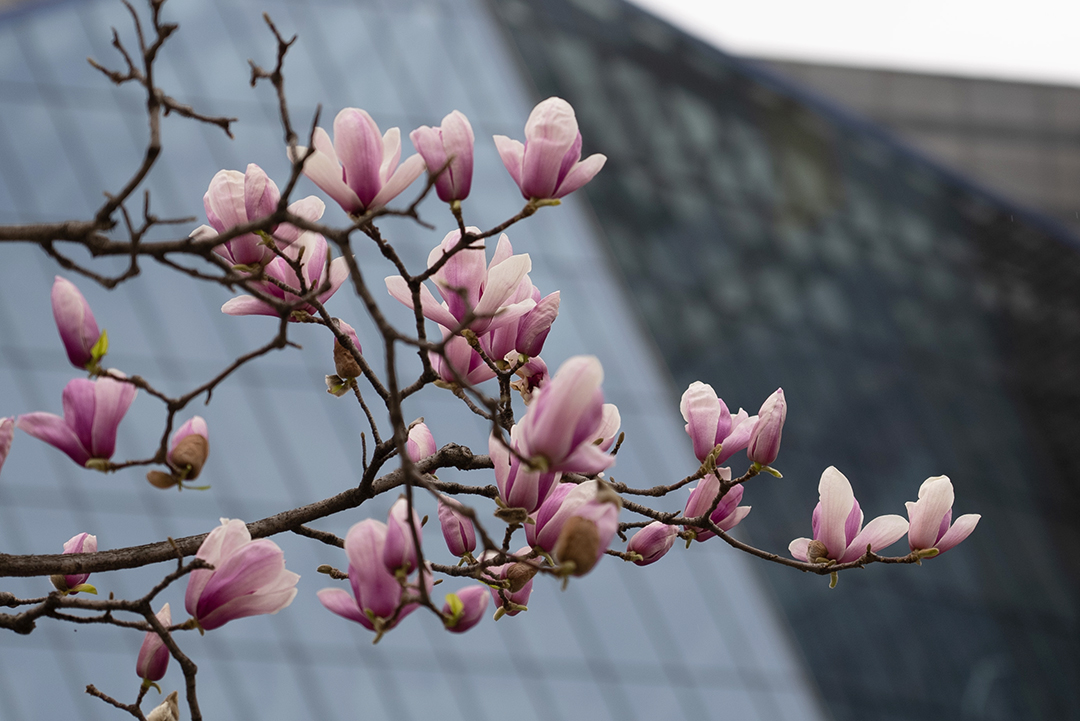
Yulan magnolia belongs to the Magnolia genus, the Magnoliaceae family. A native species in in China, it has a cultivation history of around 2,500 years as the precious garden flowering trees. With high ornamental value and strong resistance to harmful gases, it is an excellent tree species for afforestation and pollution prevention. In ancient times, magnolia trees were planted around pavilions, terraces and buildings. Nowadays, they are commonly seen in parks, greenbelts, residential areas and on roadsides. Magnolia trees planted in Chengdu mainly includes Yulan magnolia, southern magnolia, and purple magnolia.
Begonia flower
Chengdu Botanical Garden, Chengdu Research Base of Giant Panda Breeding, People’s Park, Jinniu Park, Chengdu Cultural Park, Baihuatan Park, Chengdu Wuhou Shrine Museum, Shuangliu Tanghu Park, and Wenhua Village in Dujiangyan City
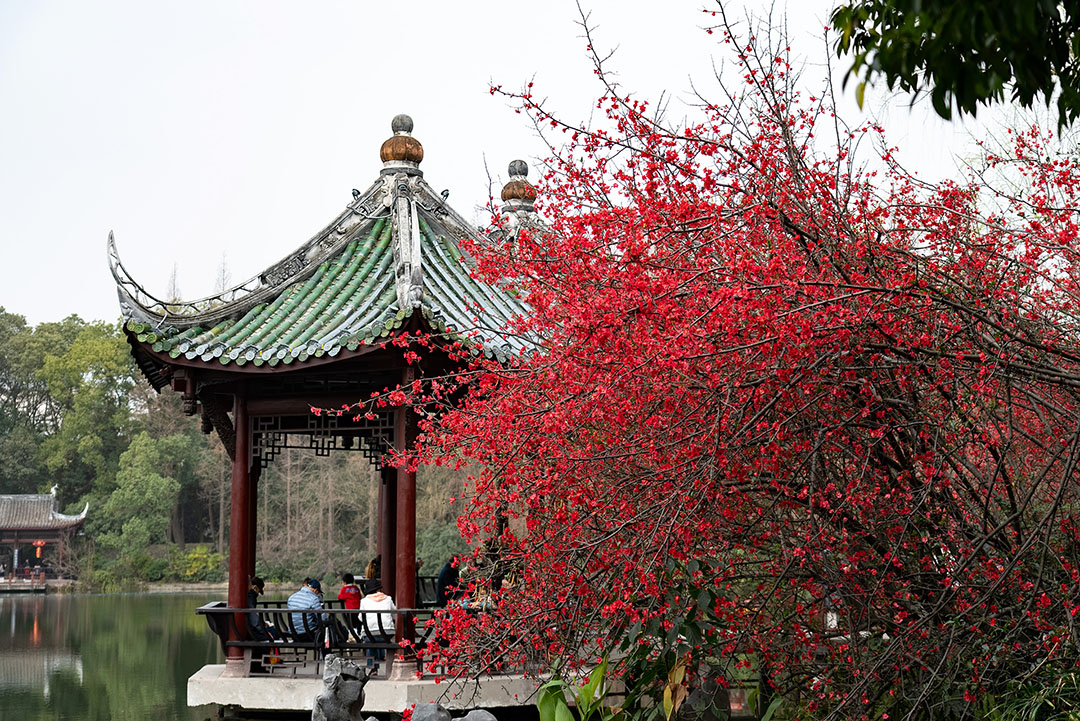
Begonia is a famous ornamental tree species in China, belonging to the Malus and Pseudocydonia genuses, the Rosaceae family. It mainly includes the flowering quince, Hall crabapple, midget crab apple, Chaenomeles cathayensis, and Hupeh crab. Begonia is widely planted along Chengdu’s roads, as well as in parks and green spaces.
Cole flower
Ecological zones around the city, Daosong Cole Flower Base in Xindu District, Ranyi Town of Qionglai City, Sandaoyan Town in Pidu District, and Chongqing Road in Chongzhou City
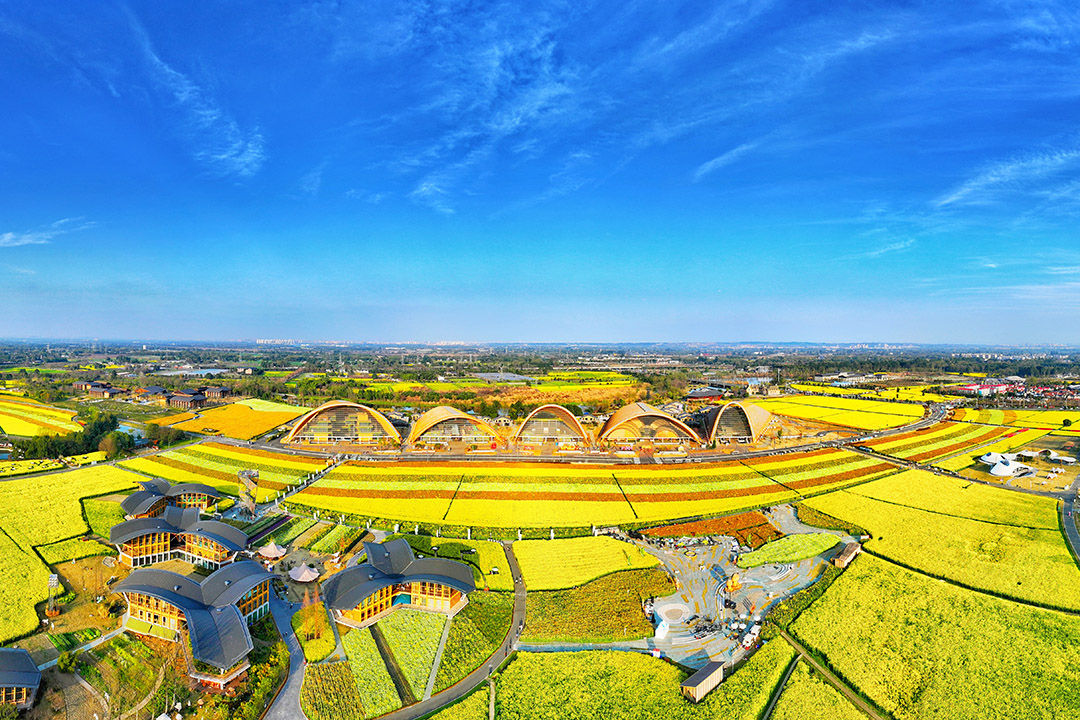
Canola flower, also called Yuntai in Chinese, is a biennial herbaceous plant belonging to the Brassicaceae family. Its flowers bloom a rich golden yellow and it is widely cultivated in China, particularly in areas south to the Yangtze River. It is the primary source of edible vegetable oil in China. Currently, Cole flowers have entered the flowering season, attracting bees and butterflies with rich nectar and pollen, as well as visitors to the flower fields.
Plum blossom
Wangjianglou Park, Du Fu Thatched Cottage Museum, and Wenhua Village in Dujiangyan City
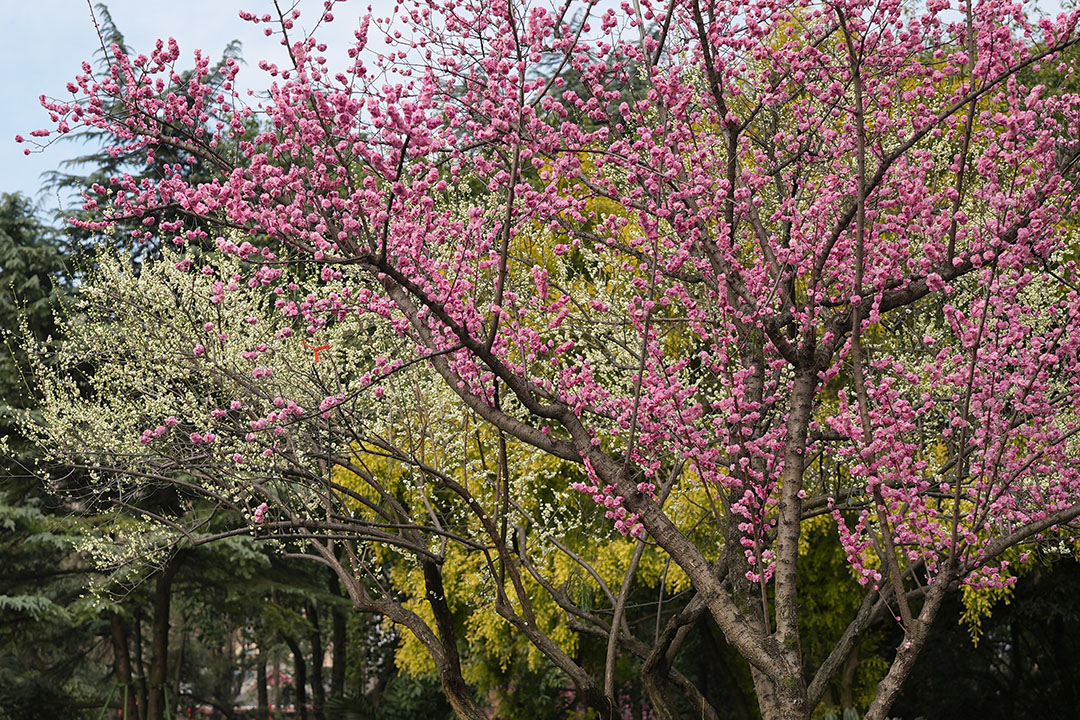
The plum blossom ranks first among the top ten famous flowers in China. It is a woody plant in the Prunus genus, the Rosaceae family. It has a cultivation history of more than 3,000 years in China, with many varieties of ornamental and fruit trees. Many types of plum blossom trees can not only be grown in the open ground for viewing, but can also be grown as potted flowers. Plum blossom is listed together with the orchid, bamboo and chrysanthemum as the Four Gentlemen among flowers in China, and listed together with the pine and bamboo as the Three Friends of Winter. In the traditional Chinese culture, the plum blossom is esteemed for its nobleness, modesty and perseverance in character, inspiring people to strive and work hard. The plum blossoms come out in late winter and early spring. It is the first among all flowers to blossom and welcome spring. With its elegant white petals and gnarled branches, plum blossom is particularly valued for ornamental use in potted plants and courtyard trees.
Plum flower & pear blossom
Lihuaxi Cultural Tourism Zone in Xinjin District, Huaguo Mountain in Chongzhou City, Gexian Mountain in Pengzhou City, Wushan Township in Dayi County, and Wumiao Township in Jianyang City
The pear tree has a cultivation history of more than 2,000 years in China, and has been deeply loved by people since ancient times, especially the literati. Both the plum and pear trees belong to the Rosaceae family and originated in China. Not only do they yield fruits that we enjoy, but their blossoms are also greatly admired for their aesthetic beauty. The flowers of the plum and pear trees are predominantly white; when in full bloom, they look like white clouds over the branches, with a subtle fragrance. The pure white plum flowers are small and clustered, plain but beautiful, with a fragrant smell; the jade-like pear blossoms are bigger and more clustered, elegant and refined, with a light but attractive scent.
Peach blossom
Peach Blossom Hometown in Longquanyi District, Donglai Land of Peach Blossoms in Jiajia Town of Jianyang City, Xiaoyunding Ecological Valley in Jintang County, and Peach Blossom Village in Jinxing Township of Dayi County
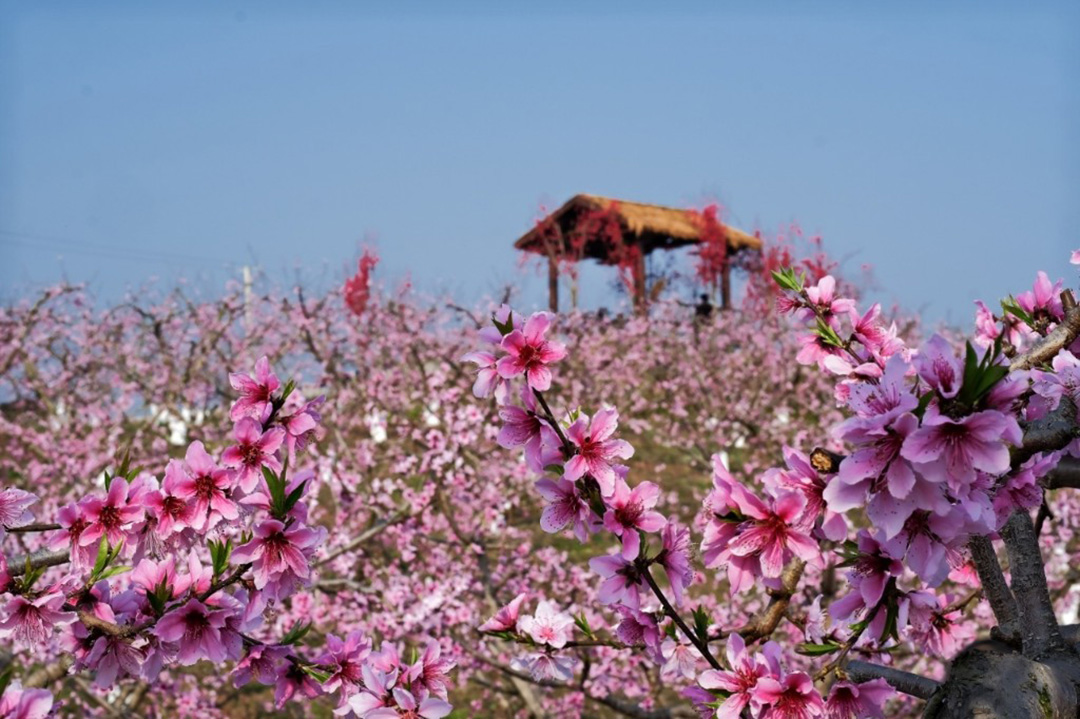
The peach tree is an arbor of the genus Prunus, the family Rosaceae. It originated in China and has been cultivated for more than three thousand years. Apart from serving as a fruit tree, it is also an excellent species for greening and beautifying the environment. Peach blossoms can be used as food and medicine. Ancient people used the peach pink to praise the charming and beautiful faces of young girls. The colorful peach blossom is an important flowering tree species in early spring, and people also use it to symbolize the arrival of spring.
Azalea
Huawu Renjian Scenic Area in Xinjin District, and Shuguo Juandu Scenic Area in Pidu District
The azalea belongs to the genus Rhododendron. It is one of the world-famous flowers and one of the top ten famous flowers in China. When the flowers bloom, one may see mountains covered in red. The azalea is gorgeous and colorful. Flowers come in various colors such as red, yellow, white and purple. They have a long flowering period and are deeply loved by people. Azalea can be found in various places such as courtyards, parks and roadside flower beds.
Cherry blossom
Chengdu Botanical Garden, Phoenix Lake in Qingbaijiang District, Baota Mountain in Jintang County, Sanlang Town of Chongzhou City, and Fenghuang Avenue in Qionglai
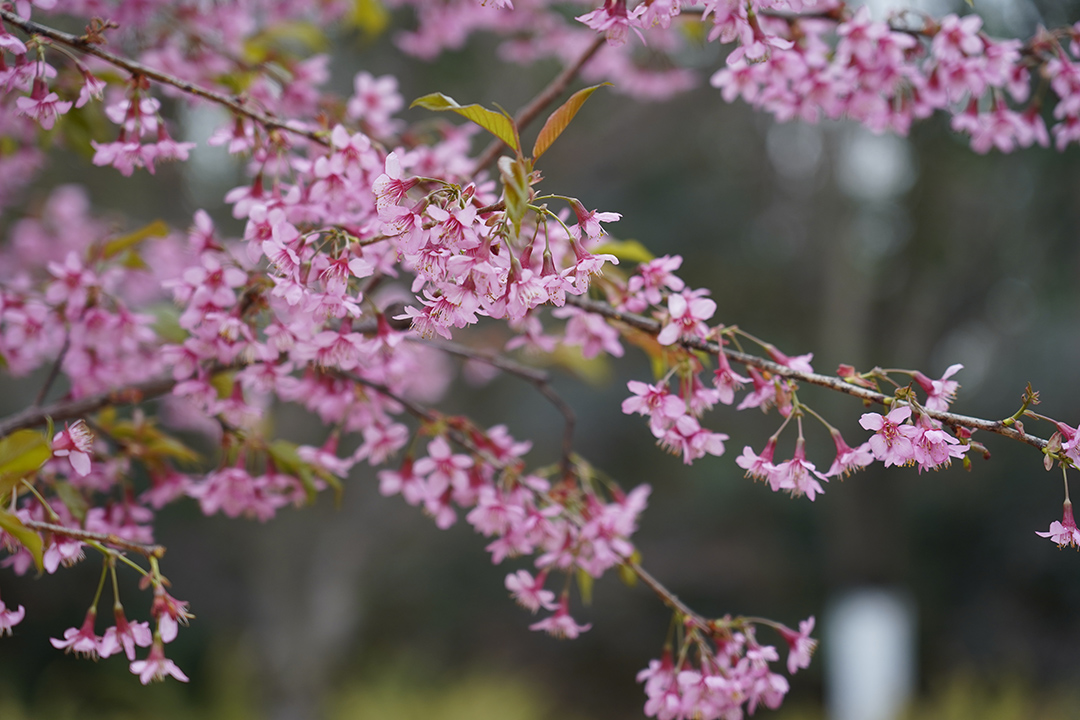
The cherry tree is an ornamental species of plants in the genus Prunus, the family Rosaceae. It is a deciduous tree or shrub. There is quite a diverse range of cherry blossom varieties, with over 300 types in total, and more than 50 in China. Of the approximately 40 wild ancestral species of cherry blossoms in the world, 33 are originally from China. The trees are an important early spring flowering tree species commonly planted in gardens for appreciation.
Tree peony
Danjingshan Scenic Area in Pengzhou City, Datang Peony Garden
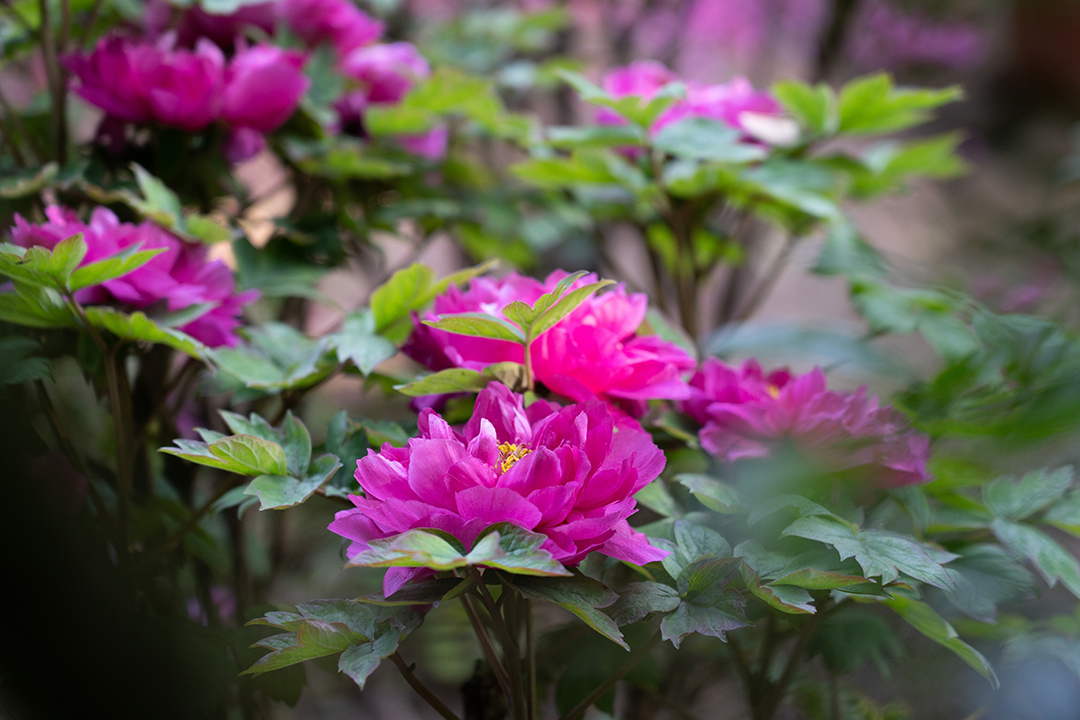
The peony is a unique precious woody plant in China with bright and elegant flowers. It has been cultivated for more than 1,500 years, enjoying the reputation of "King of Flowers". Peonies are widely cultivated in China. Pengzhou peony is especially loved by people due to its characteristics, especially the large flowers with many petals, rich fragrance and beautiful appearance. Pengzhou peony is famous for its rustic beauty and large flowers. The city has become one of the "four major peony viewing bases" in China together with Luoyang, Changshu and Heze. In Danjing Mountain and Pengzhou Garden, a grand peony fair with a display of diverse varieties is held around the Qingming Festival every year. Lu You, a poet of the Southern Song Dynasty (1127-1279), wrote in his Peonies in Tianpeng (the present Pengzhou City) that "Luoyang peony ranks first in Henan Province, while Tianpeng peony ranks first in Sichuan Province".
Araguaney
Ximianqiao Street
Handroanthus chrysanthus, also known as araguaney, is a deciduous tree from the Bignoniaceae family. It blooms in the spring, around March to April, with a funnel-shaped corolla that also resembles the shape of a wind chime. The flowers are bright yellow, and when in bloom, the tree has more flowers than leaves, making it quite a sight. When araguaney changes colors, it turns a brilliant gold, and during its flowering period, the tree is covered in yellow blossoms. It is suitable for courtyards, parks, residential areas, and roadsides. It can be planted in clusters or in rows.
Chinese snowball
Chengdu Botanical Garden, Huawu Renjian Scenic Area in Xinjin District, Manhua Manor in Xindu District
Viburnum macrocephalum, commonly known as Chinese snowball, is a deciduous shrub in the genus Viburnum, the family Adoxaceae. Native to the Yangtze River Plain, central China and southwestern China, it is now cultivated in gardens throughout China. Each flower, with an umbel, looks like a ball consisting of hundreds of florets. It has refreshing fragrance and the blooming period that lasts about half a month. The Chinese snowball is often planted under sparse trees, or on the edge of touring roads. It can also be cultivated beside courtyard walls and in front of windows. It can also be used for cut flowers or potted plants.
Wisteria
Chengdu Botanical Garden, Huawu Renjian Scenic Area in Xinjin District, Manhua Manor in Xindu District
Wisteria is a deciduous vine in the genus Wisteria, the family Fabaceae. It blooms in spring, with flowers mostly in white and purple-blue colors, which are arranged neatly in a raceme with a total length generally around 30 cm, with some extending over 50 cm, which is quite spectacular. Wisteria is a vine plant loved for its flowers and green shade. In early summer, the purple flowers in clusters hang down, exuding an intoxicating scent. In the height of summer, the foliage becomes dense and covers the trellis. Wisteria has a strong ability to absorb dust in the air and is commonly planted beside garden pergolas, by the lake, on the pond edges, rockeries, and archway entrances.
Chinese peony
Huatian Guangxing Chinese Peony Garden, Jintang District
Chinese peony is a perennial herbaceous plant in the genus Paeonia, the family Paeoniaceae. Chinese peony is a traditional famous flower in China. It has large charming flowers, large corollas, bright colors and a large number of petals. Known as "the Fairy of Flowers" and "the Minister of Flowers", it is listed as one of the "top ten famous flowers" and is also renowned as the "Flower Goddess in May". Chinese peony is an economic plant that can be used for both medicinal and ornamental purposes. It is suitable to be planted in special flower beds and on flower borders or on forest edges, by hill stones and in courtyards. It can also be sold as potted plants and cut flowers. The root tuber of Chinese peony can also be used for medicinal purposes.
Rose, Chinese rose and multiflora rose
Chengdu Botanical Garden, Four-Season Courtyard at Rose de Mai and Wanhua Shijing Garden in Wenjiang District, Manhua Manor and Sea of Roses in Xinjin District
Rose, Chinese rose and multiflora rose are the "three rose sisters". They can be easily confusing due to their similar appearances. In English, these three plants are also collectively known as "rose", but a scrutinized look will find some differences among them.
First of all, their flowering seasons are different. The so-called Chinese rose ("yueji" in Chinese), as its name implies, means that it blooms every month. However, roses and multiflora roses only blossom once or twice from May to August. Secondly, the blooming period of them varies - while the period of a single rose is generally one day from morning to dusk, that of a single Chinese rose is 3–5 days, and even 7–10 days. In addition, the flowers are of different sizes. The Chinese rose is the largest, with a flower diameter exceeding 6 cm. Roses and multiflora roses are similar in size, with a flower diameter of about 3 cm. Lastly, flowers grow at different positions on the stems. For roses and Chinese roses, one flower usually grows at the top of each stem, occasionally with 1–3 flowers in a cluster, while multiflora roses generally have 6–7 flowers in a cluster, forming an umbel-like structure. After the flowers wither, the sepals of multiflora roses fall off, while the sepals of roses and Chinese roses remain. In terms of fragrance, the scent of roses is the most intense, followed by that of Chinese roses, with that of multiflora roses being the lightest. Although the stems of the "three sisters" all have thorns, they are very different.
The thorns of roses are part of the stems, so it is not easy to break them off, while those of Chinese roses and multiflora roses are part of the bark of the stems, which makes them easier to break off.



